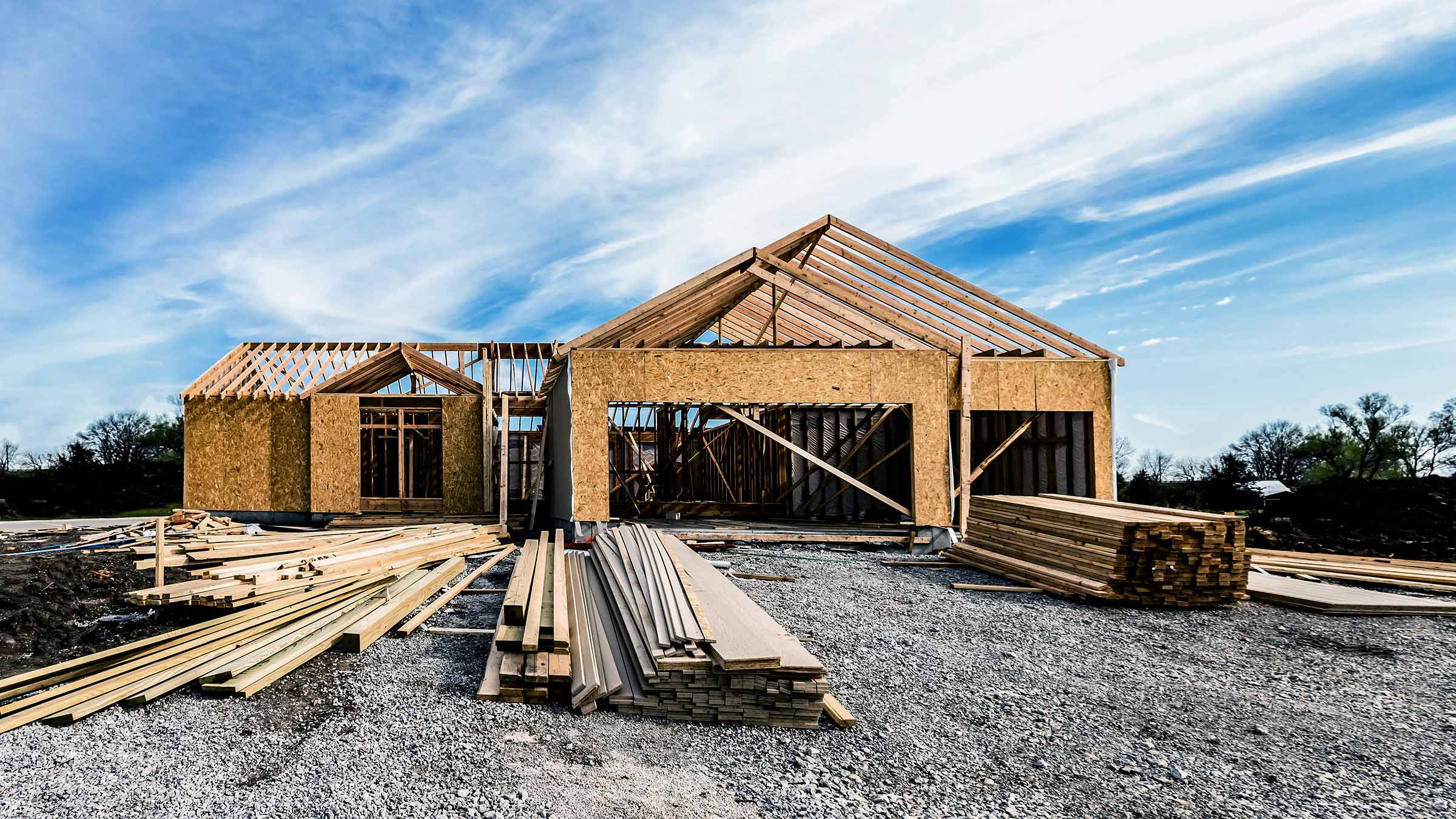Ninth District homebuilders are sounding the alarm as higher construction costs and interest rates slam would-be homebuyers, according to a recent Minneapolis Fed survey of the construction industry.
These costs are among the drivers of overall inflation, which the Federal Reserve is attempting to tame by raising rates multiple times this year. For now, though, homebuilders and homebuyers are experiencing the worst of both worlds (Figure 1).
This circumstance has made “the affordability of new homes the worst we have seen in recent times,” said a northwestern Twin Cities general contractor who reported significantly lower year-over-year revenues and profits. “We as a business understand the need to lower inflation, but the housing industry tends to be the first to really feel the pinch, and we are indeed feeling it.”
Inflation and interest rates also bedeviled firms in other segments of the construction industry, including commercial, industrial, and infrastructure, but the impact was much more widespread for homebuilders.
Compared to a year ago, a little more than half of survey respondents in the residential segment reported lower revenues (Figure 2). But in the other segments, it’s the opposite: more than half reported unchanged or higher revenues.
Profits followed the same trend. Looking ahead, a majority in the residential segment expected revenue to continue to decline over the next six months, while in the other segments, a majority expected revenue to remain the same or increase (Figure 3).
The Minneapolis Fed surveyed Ninth District construction firms in November. Respondents were primarily from the Twin Cities, with significant numbers from Greater Minnesota, so survey responses may not represent the district as a whole.
Double trouble for homebuilders
Of the several obstacles slowing down the construction industry this fall, inflation was among the biggest, according to the survey (Figure 4). Two-thirds of the residential segment identified it as one of the two greatest challenges they face, not including customer demand. A majority in each of the other segments also said they are greatly challenged by inflation, though that sentiment was not as widespread as in the residential segment.
The high cost of construction materials is behind these concerns, but respondents also reported that they had to spend more on fuel for their trucks, natural gas to heat their buildings, and wages to keep up with the cost of living, especially in an environment where competition for workers remains fierce.
In contrast to inflation, high interest rates were not widely seen as the greatest obstacle within the industry. In the residential segment, where the greatest concern lies, nearly half said they were greatly challenged by high rates. In other segments, however, interest rates were a top challenge for only 10 percent to 20 percent; the greater challenges for them were the availability of labor and materials, possibly because there was more work to be done in those segments.
For those challenged by interest rates, the impact could be dramatic.
“These interest rate hikes have put a giant brake on the market. The sales activity has ground to a complete halt, and anymore increases to the rate will make it even worse,” one Twin Cities homebuilder warned.
“This is not a large-margin industry so when you dramatically raise rates it affects us in a massive way,” said another Twin Cities homebuilder. “Not only are we talking about potentially needing to cut staff, but our fears are that we will have no choice but to close down our business.”
Unfortunately for the construction industry, inflation and interest rates have become more challenging in recent weeks, according to a majority of respondents in each of the industry segments. In the residential segment, 57 percent said inflation had become more challenging and 90 percent said interest rates had become more challenging. Availability of labor and material supplies, while great challenges for many, were unchanged or improved for a majority in each segment; they are still challenging but they haven’t gotten worse.
Longer-term decline expected
The outlook for the residential segment appears to have shifted significantly from earlier in the year, when most homebuilders were still hopeful about the future. It’s the only segment in which a majority said they’re pessimistic about the next six months (Figure 5). That’s because it’s the only segment in which a majority reported an increase in project cancellations, a decrease in requests for proposals from the private sector (a majority said public-sector requests for proposals were the same or had increased, similar to other segments), and a lower backlog of future projects.
Firms that can diversify away from the residential segment said they’re focusing more on other segments. Firms that already serve those other segments said they’re bracing for additional competition.
Other firms said they’re forced to cut prices despite paying higher costs, or they’re laying off workers. According to the survey, 11 percent of the residential segment has already cut staff and 26 percent plan to do so in the next six months. That’s more than double the share of respondents in other segments who have cut staff or plan to.
“We will most likely be laying off the employees that are not of the highest quality, and will take on work at cost to keep our quality help,” said a subcontractor from a western Twin Cities suburb.
Several respondents said such drastic steps are necessary because they’re concerned the housing market won’t turn around in 2023 or beyond.
“We are grappling with the need to restructure the company to the new normal as the nation continues to fight inflation,” said the northwestern Twin Cities general contractor. “We are looking at a significant change in size and staffing.”
Tu-Uyen Tran is the senior writer in the Minneapolis Fed’s Public Affairs department. He specializes in deeply reported, data-driven articles. Before joining the Bank in 2018, Tu-Uyen was an editor and reporter in Fargo, Grand Forks, and Seattle.






